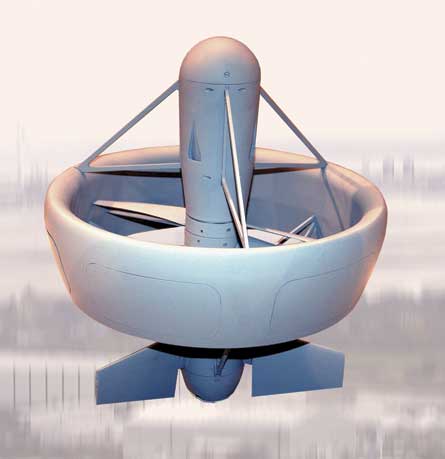Selex Sensors and Airborne Systems unveiled three new mini unmanned air vehicle systems as part of plans to significantly expand its autonomous technologies footprint to include all classes up to the advanced tactical and lower end medium-altitude, long-endurance category.
Selex has also confirmed that it is working on an additional intermediate tactical system to fill the gap in its product range below parent company Finmeccanica's Falco advanced tactical aircraft, developed by Galileo Avionica.
The three new systems shown last week included an electric-powered ducted fan, a hand-launched mini electric fixed-wing system and a small catapult-launched tactical flying wing UAV. All are intended to operate using common ground-control and datalink systems.
Development of the ducted fan UAV designated Asio began in collaboration with the Italian Unmanned Technologies Research Institute (UTRI) two years ago, and a prototype made its debut flight in early 2006. The air vehicle duct is 0.6m (1.9ft) across with veined fins used to provide steering. Forward flight is achieved by positioning the aircraft at a 45° angle.
Selex does not intend to develop a full 90° transition capability, with the development programme focusing on close-range operations up to 10-15km (5-8nm). However, two air vehicles could be operated in tandem, with one to provide data relay to extend the surveillance horizon to 25km. Maximum speed is 25kt (46km/h), with an endurance of around 50min.
The hand-launched Otus system has a 1.5m span and a length of 0.9m. The aircraft has a typical operational weight of 2.3kg (5lb), including a 1kg payload, and a 1h endurance. Rapid prototyping work with the UTRI began last September, and a demonstrator flew in mid-December.
The modular Strix design can be taken apart for transport in a backpack. The flying wing system has a span of 3m, a length of 1.17m and uses conformal tip tail surfaces. It is intended to have an operational radius of 12.5km and an endurance of 1.5h.
|
|---|
Asio made its debut flight in 2006 |
Source: Flight International
























